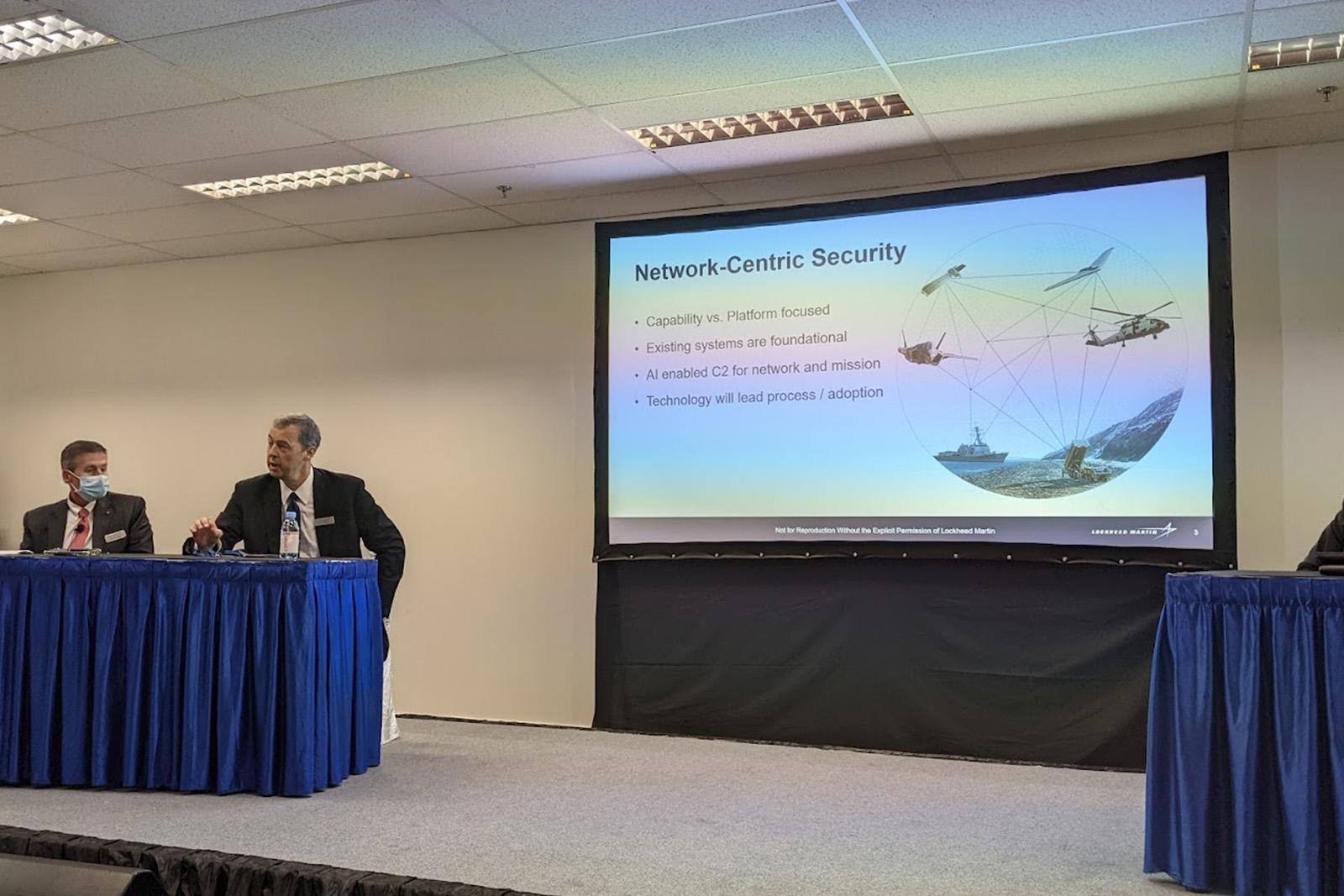
SINGAPORE—The Australian military has taken the lead in the international adoption of the Joint All-Domain Command-and-Control concept—the effort to rapidly connect different sensors with weapons—with its own program in competition.
The new Australian effort is called AIR6500 and will give the Australian Defense Force a joint air battle management system for integrated air and missile defense. AIR6500 will link sensors in the air, sea and space to monitor for incoming threats
The Australian Defense Force has downselected Lockheed and Northrop Grumman for the program, with the winner expected to be announced in late 2023.
Lockheed Martin, sees growth for the plan across the Asia-Pacific region, with several countries expressing interest. But there is a catch that will make international adoption of the concept difficult.
Joint All-Domain Command-and-Control (JADC2), which originated in the U.S. Defense Department as a broad concept without a real set of requirements, is centered on creating a new network to integrate disparate sensors and weapons systems and have them speak the same digital language on a central network. However, individual militaries operate varying aircraft, radars and other systems, so the idea of integration becomes more difficult.
“My guess is that going in, just from the way we look at it, there’s going to be some significant adaptation to some of the things you’re talking about within the country itself, just based upon what they do and don’t want to replace,” says Tim Cahill, Lockheed’s senior vice president of global business development and strategy. “Because every country has got some level of infrastructure already, and then you either decide to replace all that to go to something standard you built, or you adapt and use that. I just suspect that that’ll be individual decisions.”
In some nations, it can be easier because they operate the same system. For example, Lockheed Martin F-35 operators use data links built into the aircraft. In other nations, however, there needs to be new work to integrate older aircraft and sensors, such as radars, into a new, high-tech network. Lockheed has seen this in the United Arab Emirates, where a new, all-domain command-and-control system would have to adapt to older systems and legacy waveforms, Cahill says.
Australia’s AIR6500 acquisition effort is moving along effectively in large part because it told the companies exactly what they want, and there has been ongoing, clear discussions as the program progresses.
“What I think is unique about the efforts of the Australian Defense Force, and what I think is really laudable in their approach, is the fact that they have a very, very well-defined set of requirements that they are attempting to achieve in order to be able to build this system of systems,” says Tom Rowden, Lockheed’s vice president of international strategy and business development
In some ways, this is counter to the U.S. experience in JADC2 so far. It has broken out into three individual efforts under the U.S. Army, Navy and Air Force. New Air Force Secretary Frank Kendall said last September that he wanted to slow down his service’s effort because it has not effectively focused on bringing on a real capability quickly. The U.S. Joint Chiefs of Staff are working on a broader JADC2 strategy to define how it should progress.
Kendall recently brought together leaders of industry to review the progress and discuss how it should be refined. Lockheed say this slowdown can be good for its business, because it can more clearly define requirements that the company could build toward, as has happened in Australia.
“We look forward to the work being done, and we’re working hand in hand with not only the department but our other industry partners such that we can shape when that hits," says Gary North, Lockheed’s vice president for customer requirements. "So [we are] looking forward to it."
